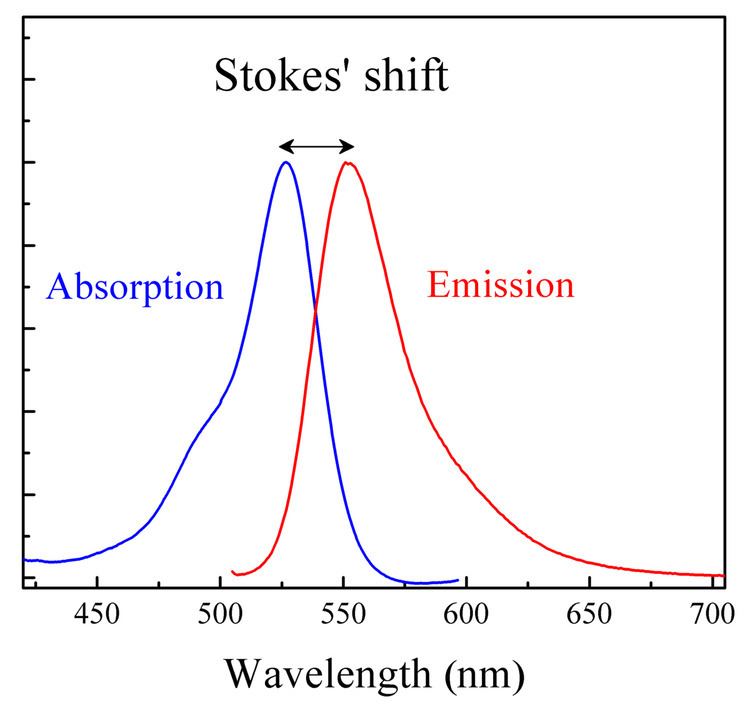 | ||
Stokes shift is the difference (in wavelength or frequency units) between positions of the band maxima of the absorption and emission spectra (fluorescence and Raman being two examples) of the same electronic transition. It is named after Irish physicist George G. Stokes.
Contents
When a system (be it a molecule or atom) absorbs a photon, it gains energy and enters an excited state. One way for the system to relax is to emit a photon, thus losing its energy (another method would be the loss of energy as heat). When the emitted photon has less energy than the absorbed photon, this energy difference is the Stokes shift.
The Stokes shift is the result of two actions: Vibrational relaxation or dissipation and solvent reorganisation. A fluorophore is a dipole, surrounded by water molecules. When a fluorophore enters an excited state, its dipole moment will change, but water molecules will not be able to adjust so quickly. Only after vibrational relaxation will there will be a realignment of their dipole moments.
Anti-Stokes Shift
If the emitted photon has more energy, the energy difference is called an anti-Stokes shift; this extra energy comes from dissipation of thermal phonons in a crystal lattice, cooling the crystal in the process. Yttrium oxysulfide doped with gadolinium oxysulfide is a common industrial anti-Stokes pigment, absorbing in the near-infrared and emitting in the visible portion of the spectrum. Photon upconversion is another anti-Stokes process. An example of this later process is demonstrated by Upconverting nanoparticles.
Stokes fluorescence
Stokes fluorescence is the emission of a longer wavelength photon (lower frequency or energy) by a molecule that has absorbed a photon of shorter wavelength (higher frequency or energy). Both absorption and radiation (emission) of energy are distinctive for a particular molecular structure. If a material has a direct bandgap in the range of visible light, the light shining on it is absorbed, causing electrons to become excited to a higher energy state. The electrons remain in the excited state for about 10−8 seconds. This number varies over several orders of magnitude depending on the sample, and is known as the fluorescence lifetime of the sample. After losing a small amount of energy through vibrational relaxation, the molecule returns to the ground state and energy is emitted.
